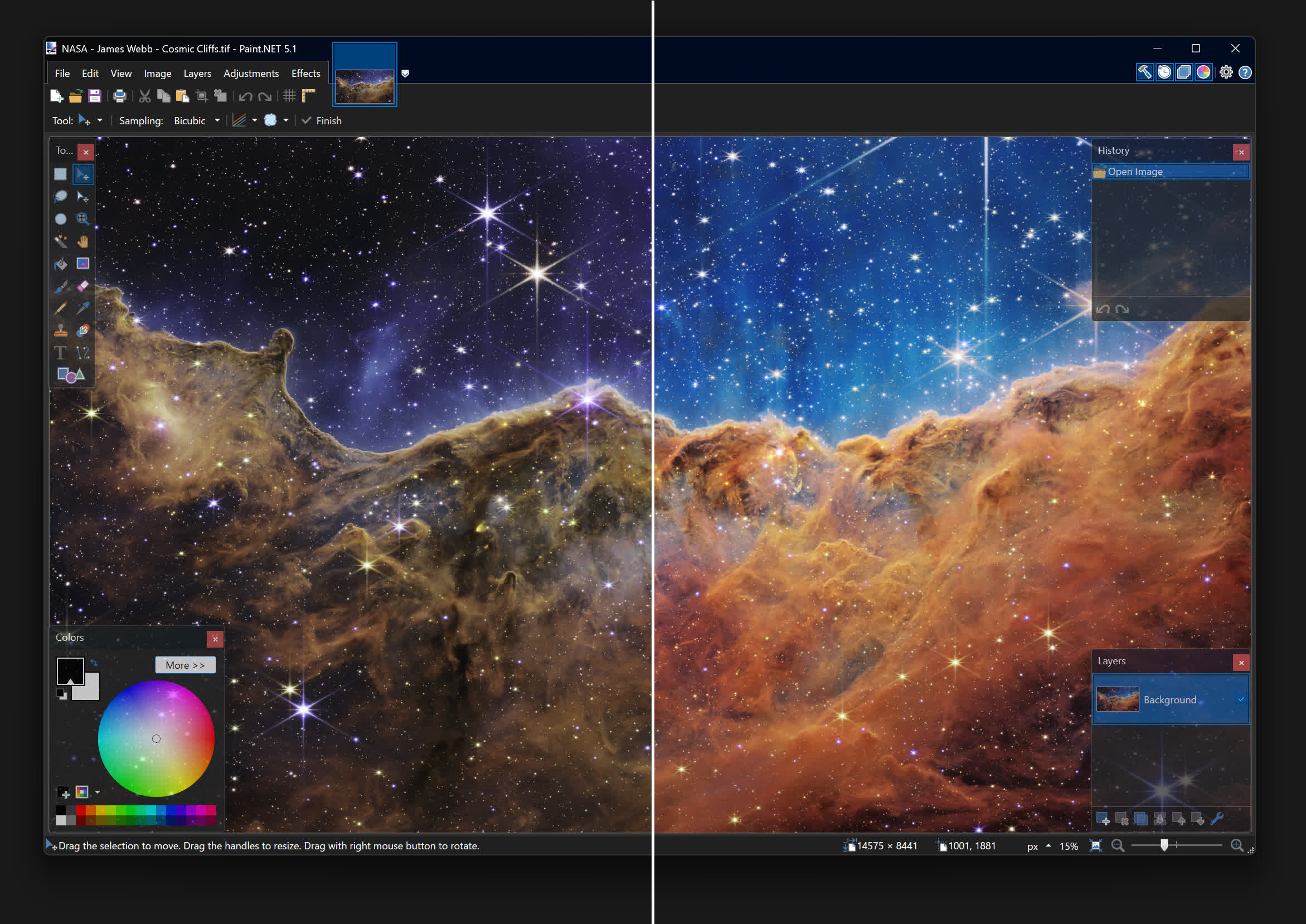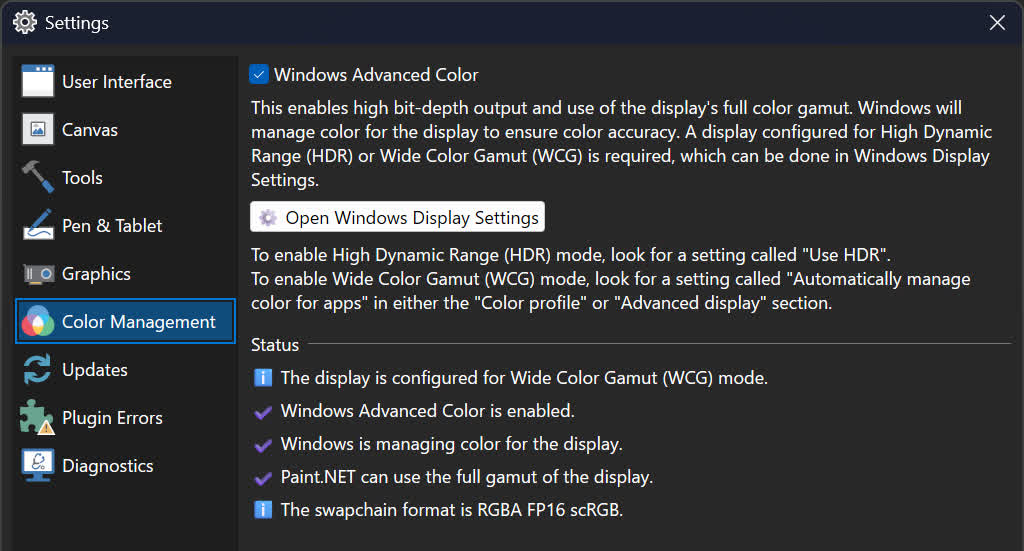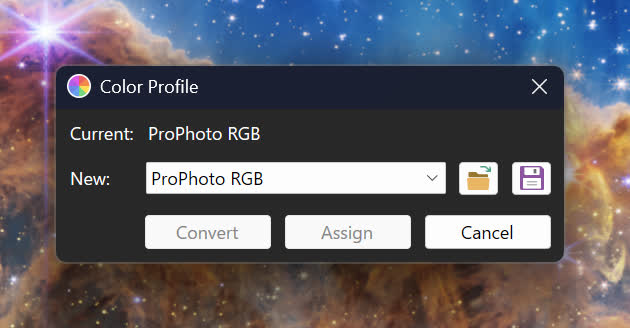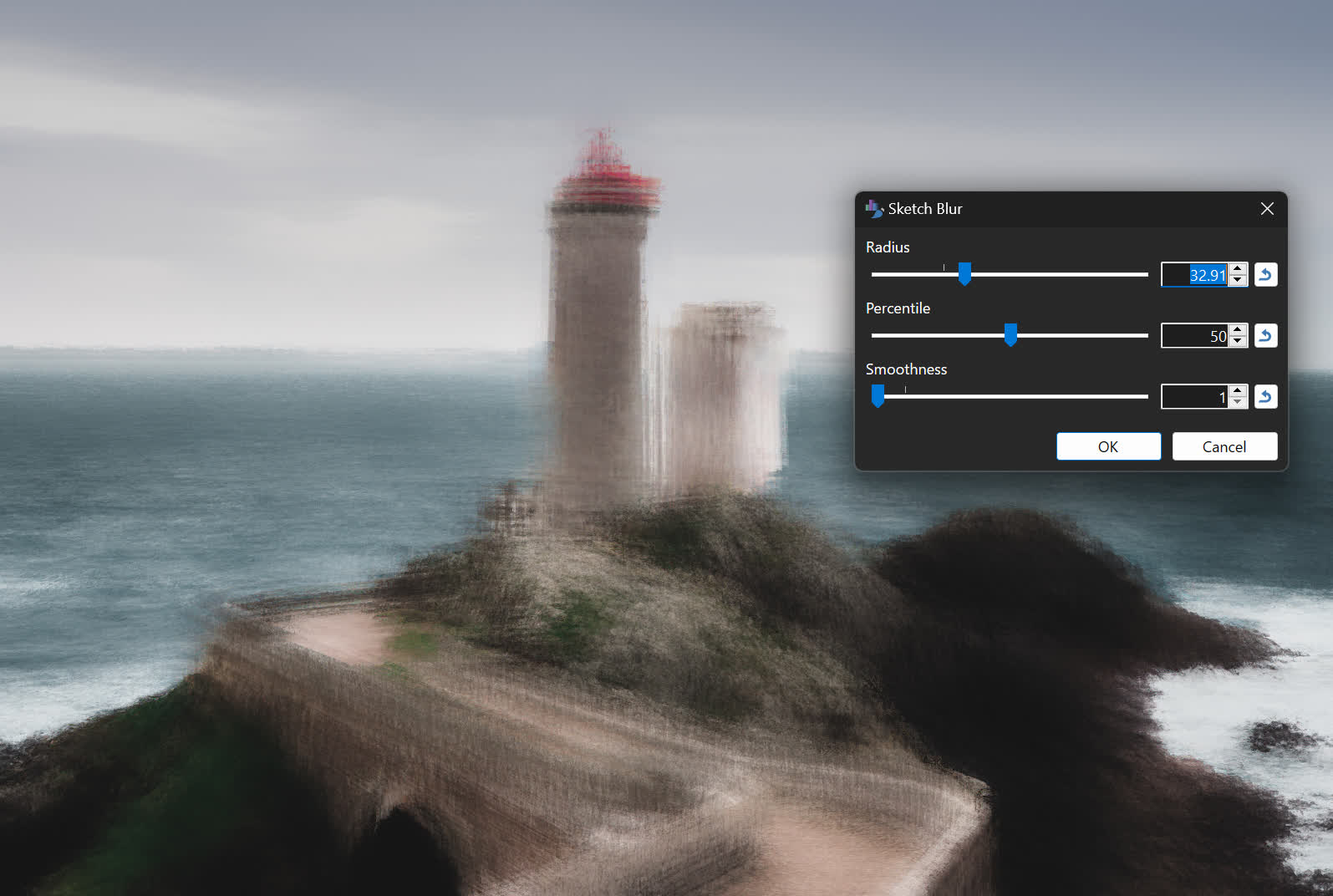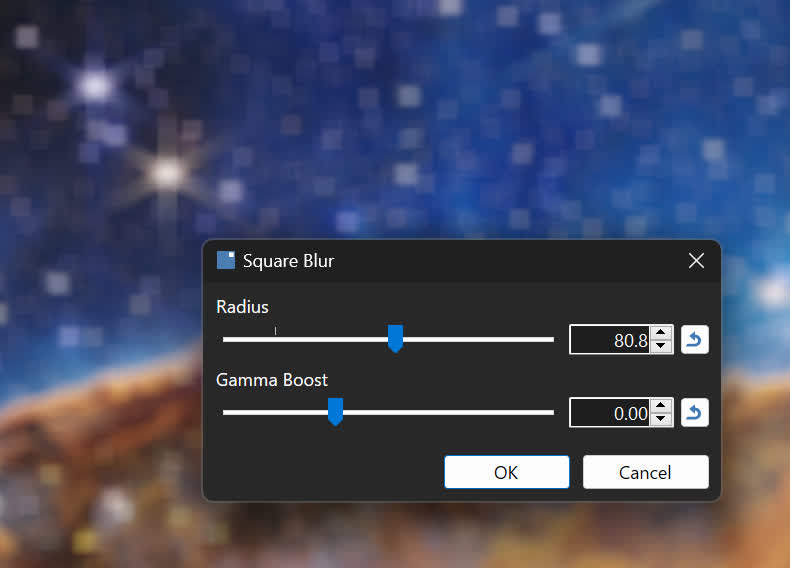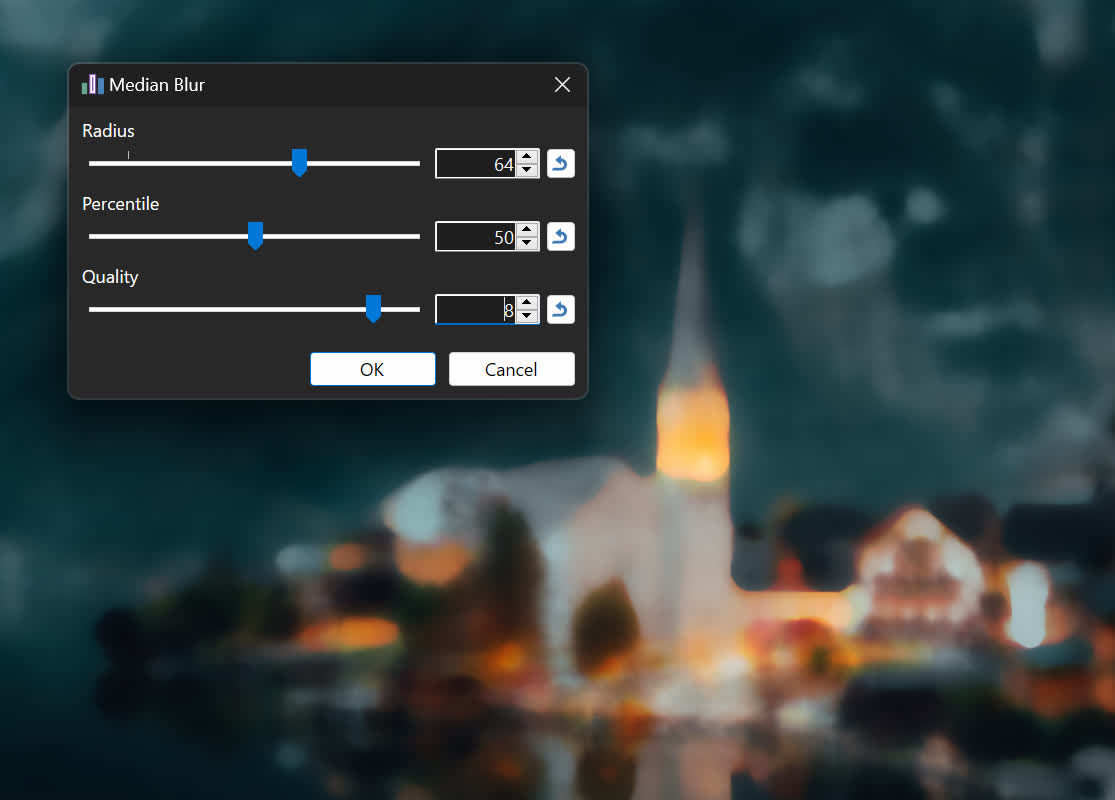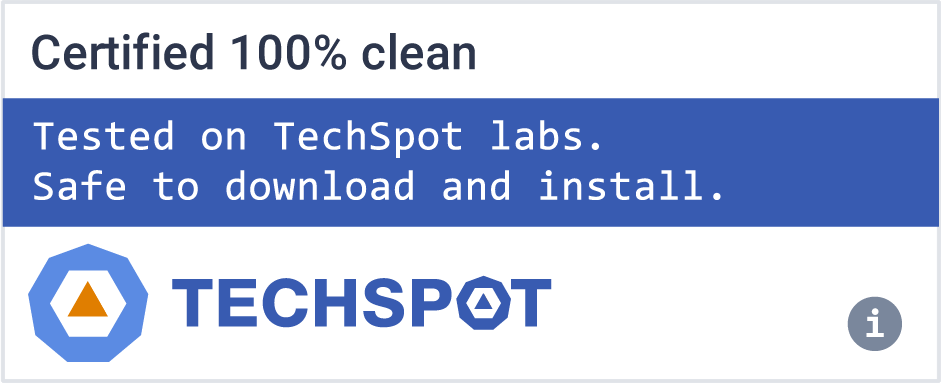Paint.NET is an image and photo editing application for Windows. It features an intuitive user interface with support for layers, unlimited undo, special effects, and a wide variety of useful and powerful tools. An active and growing online community provides friendly help, tutorials, and plugins.
It started development as an undergraduate college senior design project mentored by Microsoft, and is now maintained and developed by Rick Brewster. Originally intended as a free replacement for the Paint app that comes with Windows, it has grown into a powerful yet simple image and photo editor tool. It has been compared to other digital photo editing software packages such as Adobe Photoshop, Corel Paint Shop Pro, Microsoft Photo Editor, and The GIMP.
Is Paint.NET a good replacement for MS Paint?
Paint.NET is a great replacement for Microsoft Paint. It offers a similar simple interface and practically the same features, plus extra editing options that could come in handy for anyone looking to do some more advanced editing.
Is Paint.NET like Photoshop?
Paint.NET is similar to Photoshop in that they are both image editors with support for advanced features like layers, drawing tools, special effects and unlimited history revision. However, the tools in Paint.NET have far less reach than the ones found in Photoshop. Adobe Photoshop is the industry standard for graphics editing and was conceived with professionals in mind.
Is Paint.NET free or a paid application?
To help finance the project, Paint.NET developers offer the app in two versions: the classic version which you can download here free of charge, and a paid Windows Store version. If you would like to support the project, the Windows Store version offers some extra features which include automatic background updates, easy installation onto all of your Windows devices, and improved reliability.
Features
- The web installer is also provided, which will download and run the correct installer for any supported CPU and OS.
- Performance in many areas has been substantially improved, and overall memory usage has also been greatly reduced (especially when more than 1 image is open).
- The user interface has been refreshed with new icons, and visual styling has been enhanced for Aero Glass (Windows 7 / Vista only).
- Upgraded to use the latest .NET Framework 3.5 SP1, which has many built-in performance improvements.
- New effect: Blurs -> Surface Blur, by Ed Harvey
- New effect: Distort -> Dents, by Ed Harvey
- New effect: Distort -> Crystalize, by Ed Harvey
- The font manager for the Text Tool has been completely rewritten, resulting in increased performance and better reliability. On Windows 7, the quality of text is much better as a result of using DirectWrite (this also works on Windows Vista if you have installed DirectX 11).
- The built-in updater now has the ability to download updates in the background, and will wait until you exit Paint.NET to install them. In previous versions, the download happened in the foreground, and you had to wait for the entire process to complete before you could use Paint.NET again.
- Now includes a Russian translation.
What's New
This is a major update to Paint.NET that includes a raft of technology upgrades including full color management, support for HDR and Wide Color Gamut displays, major improvements to input latency and memory usage, and new and revamped blur effects. In addition, the migration of effects and adjustments to the GPU has been completed, further improving their performance and quality. There are also some new canvas customization settings.
Color Management
Paint.NET finally has full color management support, a feature commonly found in more expensive or complicated imaging software. This ensures that images with embedded color profiles look the way they're supposed to, as originally captured by a camera or as intended by the author. Most cellphone cameras nowadays will take photos in a wide gamut color space like Display P3, and now those photos will have correct colors, brightness, and saturation when opened in Paint.NET.
Here's an example using a NASA photograph of the Cosmic Cliffs nebula taken by the James Webb telescope (source). It was captured in infrared and then shifted to the visible light spectrum, and the final result uses the ProPhoto RGB color space so as to utilize a very large spectrum of colors.
On the left is how the image looks if the color profile is ignored, as you'd see in Paint.NET 5.0 and earlier. On the right, however, the color profile is being applied in real-time to ensure that everything looks exactly as NASA intended it to.
Color Management is configured in Settings, but there isn't much that needs to be configured. Windows Advanced Color, enabled by default, is used to provide one-click color management support for your display. When the display is configured for High Dynamic Range (HDR) or Wide Color Gamut (WCG) mode, this enables high bit-depth output (e.g. 10-bits or more) and use of the display's full color gamut. Windows then ensures accurate and consistent color reproduction, based on what the display itself tells the system via EDID.
Displays configured for Standard Dynamic Range (SDR) do not support Windows Advanced Color, so Paint.NET will run in sRGB mode which ensures consistent color reproduction. Color accuracy is then dependent on the display itself being configured for sRGB color output.
There are instructions to guide you through enabling HDR or WCG for your display over in Windows Display Settings. A status section gives clear information about the state of color management and the display:
Wide Color Gamut mode is new for Windows 11 v24H2, and is essentially an upgraded SDR mode with high bit-depth output support, automatic color management, desktop composition in linear gamma and at FP16 precision, and none of the fussiness of HDR mode. Your monitor does not transition to HDR mode when this is enabled – it is still operating in SDR mode. I highly recommend checking this out if it is available on your system.
The new Image -> Color Profile dialog replaces the Image -> Apply Embedded Color Profile command introduced in 5.0, which was a one-way "destructive" process that converted the image to the sRGB color space and then removed the embedded color profile.
Here you can select from the image's current color profile, as well as sRGB, Adobe RGB, Display P3, and ProPhoto RGB. Or, you can import a color profile from any *.icc/*.icm file. You can also export the current image's color profile to a file. I'm planning to revise and expand this dialog as I received feedback about it from the community.
The Convert button will transform the image from its current color profile to the newly selected one. It will still appear the same on-screen, modulo any precision or gamut limitations. You will then be able to edit the image in the new color space defined by the new color profile.
The Assign button will change the color profile but not transform the colors of the image, usually resulting in it looking very different. This is useful when you have an image that has the wrong color profile embedded in it, or where the color profile was removed (such as when using "image crushers" that remove all metadata). Another possible use of this is to assign the Display P3 profile to an image to increase its saturation in a way that many people like (some feel that sRGB is undersaturated when displayed correctly).
GPU effects and plugins will automatically participate in color management unless they opt-out of it. The default WorkingSpaceLinear color context will convert the image to linear gamma in a way that is correct for the image's color profile. The linearized image is then fed into the effect, which will do its rendering, and then the output of that effect will be converted back to the (non-linearized) color space defined by the image's color profile. There are also many new APIs for working with colors and color profiles, for both GPU and CPU effects.
I'd like to give a special mention and big thanks to Clinton Ingram (aka @saucecontrol), not only for his PhotoSauce library, but for the hours and hours and hours of time he patiently discussed color management with me on Discord. This dialogue spanned several months, during which I slowly learned to crawl and then eventually walk in this extremely complicated, highly technical, and difficult problem space. This feature would not have been possible without his guidance!
New and Updated Effects
There are two new blur effects, some updates to existing effects, and all* built-in adjustments and effects have now been fully migrated to run on the GPU.
Sketch Blur is a new blur effect unique to Paint.NET. It was adapted from Andrey Akinshin's (website, twitter) implementation of the P² Quantile Estimator algorithm, which is used to calculate an approximation of the median for a stream of values. You can read more about this effect over here, where I released it as a plugin for 5.0 under the name Median Sketch. It has been further optimized since the release of the plugin, with respect to both performance and quality.
Square Blur is a very simple blur effect that computes the average color of the surrounding square area around each pixel. It could even be considered a very high-performance, but very inaccurate approximation, of the Bokeh Blur effect (which averages out the surrounding circular area).
Median Blur is a rewrite of the old Noise->Median effect. It accomplishes the same thing but uses the GPU for rendering. It is based on @_koh_'s "Hi-Lo" algorithm which cleverly uses a binary search approach to calculating the median at a specific precision. You can fine-tune the precision (quality) for the result you want to achieve; lower values produce an interesting posterized look. This effect is also Paint.NET's first foray into the realm of compute shaders, the use of which unlocked more than a 3x performance improvement over the original pixel shader implementation!
Auto-Level, Curves, Levels, Oil Painting, Reduce Noise, Surface Blur, and Outline have also been converted to run on the GPU. This completes the transition to a fully GPU-enabled effect system that was started with last year's 5.0 release.
ALL of the built-in GPU effects are available for use by GPU effect plugins, where you can use them as part of a larger Direct2D effect graph to do all sorts of sophisticated and creative image processing. I highly recommend checking out CodeLab, which has been updated to support GPU effect development. @BoltBait's GPU Accelerated Plugin Pack is also a rich source of useful and interesting GPU effects (and some non-GPU effects!), and has always been an essential addition to Paint.NET. There is also source code (on GitHub) for a set of sample effects that I wrote to illustrate how to work with the GPU effect system, which has now been updated for 5.1. Lastly, there is API documentation for both the built-in GPU effects and the set of built-in and extended Direct2D effects.
In addition, plugins can now make use of the HistogramEffect2 analysis effect. Compared to Direct2D's built-in HistogramEffect, it is more precise, can calculate up to 4096 bins (vs. 256), and works on any image size (vs. a max of 4096x4096).
* There are actually 2 effects that still do not run on the GPU. The first is Colors->Quantize, whose algorithm isn't amenable to running on the GPU. The second is Photo->Red Eye Removal, which is actually just a wrapper for a GDI+ effect.
Canvas Customization
The new Canvas settings section has two new settings to let you customize the canvas to your liking. The first is a simple toggle for the drop shadow, and the second is the ability to change the border color (sometimes called the "background" color). In addition, the Transparency Checkerboard Brightness setting has found a new home here.
You might be wondering ... why? Well, there are 3 big reasons for adding these, and I'll list them in decreasing order of importance:
- Accessibility. Being able to customize the color of the canvas border is important for some people who are using high-contrast themes. Paint.NET doesn't really know what to do with these for some of its theme colors, and this allows folks to set a color that is comfortable for their eyes and lighting conditions.
- Contrast. Sometimes when you're editing an image, the drop shadow can trick your eyes into thinking the image is a slightly different size than it actually is. In addition, it can be important to have the ability to change the canvas border color because light bleeds. Whether you realize it or not, the color of the canvas border can slightly and subtly affect your perception of the colors in the image. Changing that allows you to choose a color that is neutral for the images you are working on.
- Fun. Some people just want a purple canvas ¯\_(ã)_/¯ This is a bonus/corollary feature and was not the primary motivation for developing it.
Memory Usage and Input Latency
Last but not least, let's talk about two important fundamentals: memory usage and input latency (or "lag"). I've been chipping away at these little by little over the years, but in 5.1 there have been breakthrough improvements for both of them.
With regard to memory usage, there are two big optimizations that have came through. The first changes the canvas tile cache so that it now moves tiles to the CPU instead of copying them, which saves quite a lot of CPU memory. The second optimization changes how swapchains are handled: instead of 1 per image tab, there are only 2 that are shared between all of the them: one for the visible tab, and a spare to help prevent flickering when switching tabs. The more images you open, the more GPU memory is saved – sometimes several gigabytes! More information on these two optimizations can be found in the release notes for a beta build released back in August.
With regard to input latency, there are two upgrades that greatly improve things here. The first is the adoption of DXGI Flip Model, which is the presentation technology designed by Microsoft to reduce input latency and power consumption for DirectX games and applications. The second is something I call Async Present, which moves the call to IDXGISwapChain::Present() (or IDXGISwapChain1::Present1()) to a dedicated, high-priority background thread. In simple terms, this means that the CPU and GPU work are better parallelized: while the GPU is busy finalizing and pushing pixels over to the display, the CPU (specifically the UI thread) can continue receiving and processing input. This has produced very noticeable improvements to input latency and smoothness on most systems.

